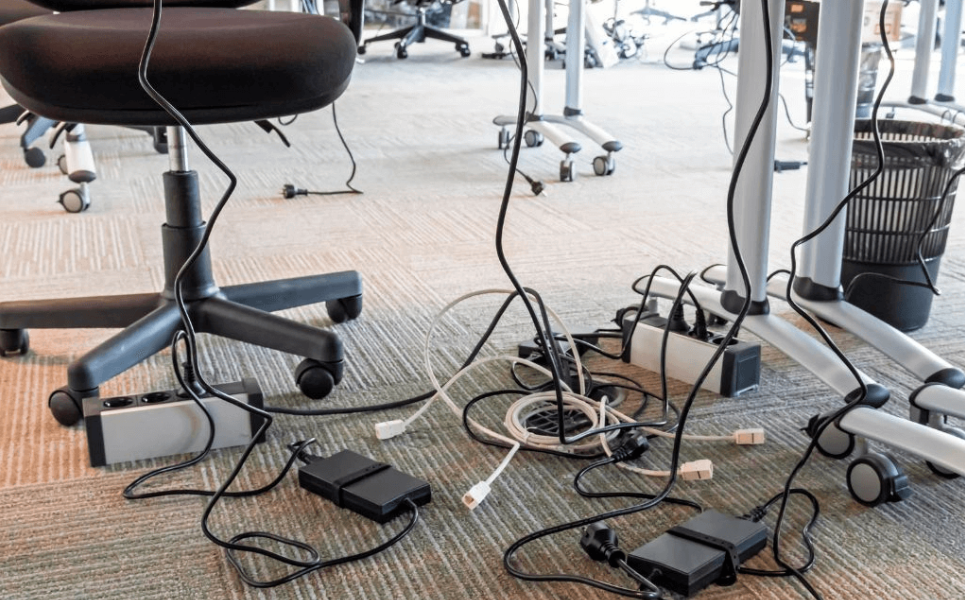Ensuring electrical safety is not just about preventing equipment damage; it’s about safeguarding employees from injuries or even fatalities due to electrical hazards. This blog highlights the critical aspects of electrical safety and provides practical tips to create a safer working environment.
What is Electrical Safety?
Electrical safety refers to the practices and regulations designed to prevent accidents and injuries resulting from electrical systems and equipment. It encompasses a range of measures, from installing and maintaining electrical devices to educating and training employees about electrical hazards. Ensuring electrical safety is crucial in mitigating risks such as electric shocks, burns and fires in the workplace.
Why is Electrical Safety Important?
Electricity, a vital resource, can be hazardous if mishandled. Electrical safety is of paramount importance due to its potential to prevent life-threatening accidents and property damage. It protects individuals from electrocution and guards against fires, shocks and other injuries caused by faulty wiring, overloaded circuits or damaged equipment. Ensuring electrical safety also helps businesses comply with regulatory standards, avoiding fines and penalties while maintaining a positive reputation.
Tips for Electrical Safety at Workplace
- Regular Inspections and Maintenance
It is vital to regularly inspect and maintain all electrical equipment and wiring in the workplace to ensure they are in good working condition. This proactive approach helps identify potential problems before they lead to accidents, ensuring the work environment remains safe and operational.
- Proper Use of Equipment
Misuse of electrical equipment is a common cause of workplace accidents. Employees can prevent electrical hazards by adhering strictly to the manufacturer’s instructions and not overloading outlets, ensuring a safer work environment.
- Keep Work Areas Dry
Since water is a conductor of electricity, maintaining dry work areas is crucial to prevent electric shocks. The risk of accidents is significantly minimised by keeping electrical equipment away from water and ensuring dry hands while operating.
- Use of Protective Equipment
Wearing the correct PPE, such as rubber gloves and insulated tools, provides an additional layer of safety for employees working near electrical systems, reducing the risk of electrical burns and shocks.
- Clear Labelling and Signage
Proper labelling of electrical panels, switches and outlets helps prevent accidental contact with live circuits. Warning signs can also inform and remind workers of potential electrical hazards, fostering a safer workplace culture.
- Electrical Safety Training
Regular electrical safety training is essential to inform all employees about potential electrical hazards and safe practices. This training helps build a safety-first mindset among workers, ensuring they know how to respond effectively in an electrical emergency.
- Emergency Preparedness
Well-established emergency procedures for electrical incidents ensure that employees can act quickly and effectively to minimise harm in case of an accident. Knowing how to shut off power properly can be life-saving during electrical emergencies.
- Cord and Cable Management
Proper cord and cable management helps prevent electrical hazards and reduce the risk of falls and trips. Regular inspection for any signs of wear and damage can also prevent electrical mishaps and maintain a tidy and safe workspace.
- Lockout/Tagout Procedures
The lockout/tagout procedures are critical for ensuring that machinery is entirely powered off and not accidentally restarted before maintenance or repair work is safely completed. This process helps prevent unexpected energisation of equipment.
- Avoid DIY Electrical Work
Encouraging a culture where employees are discouraged from undertaking DIY repairs on electrical equipment helps prevent accidents caused by unqualified attempts. Professional assistance should always be sought for electrical issues to maintain safety standards.
Importance of Training in Improving Electrical Safety
Training is pivotal in enhancing electrical safety by equipping individuals with the knowledge, skills and awareness necessary to effectively identify and mitigate potential hazards. Proper training ensures that electricians, technicians and other personnel understand safe practices, including appropriate handling of equipment, adherence to regulations and implementation of preventive measures.
Online workplace training has also become an excellent tool for improving electrical safety. It offers convenient access to employees and allows them to learn at their preferred pace and schedule.
Conclusion
Prioritising electrical safety in the workplace is imperative for employees’ well-being and operations’ integrity. Businesses can improve electrical safety by adhering to the abovementioned tips and investing in continuous education and training.




